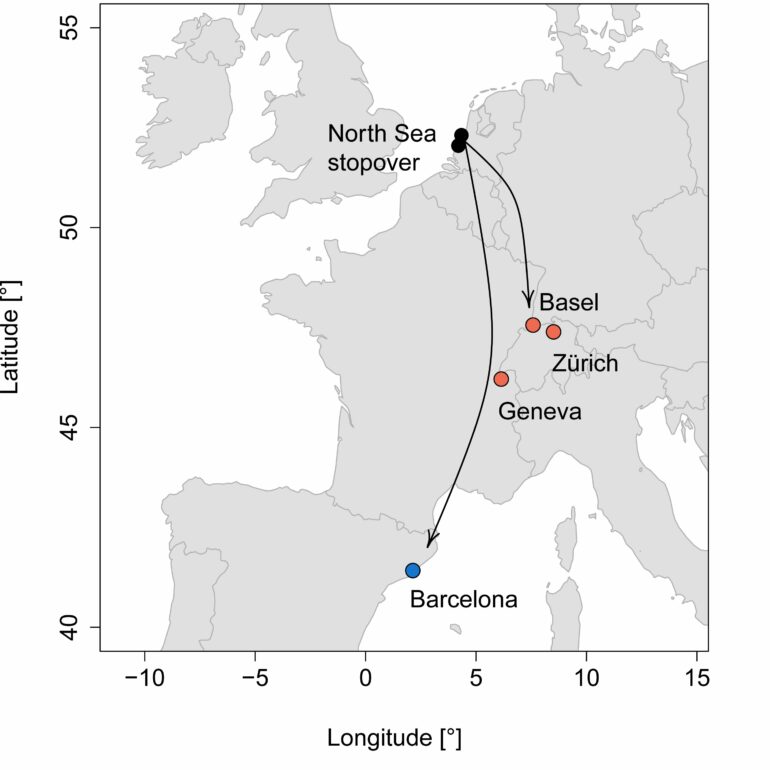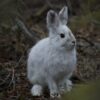Young, naïve starlings are looking for their wintering grounds independently of experienced conspecifics. Starlings are highly social birds throughout the year, but this does not mean that they copy the migration route from each other.
By revisiting a classic “displacement” experiment and by adding new data, a team of researchers at the Netherlands Institute of Ecology (NIOO-KNAW) and the Swiss Ornithological Institute (Vogelwarte Sempach) have settled a long-standing debate. Their findings are now published in the journal Biology Letters.
The question of how migratory birds locate their migration routes has intrigued mankind for centuries. Biologist Albert Perdeck from the Netherlands aimed to find answers when he displaced thousands of migrating starlings by plane from the Netherlands to Switzerland and Spain in the 1950s and 1960s.
This experiment has become a classic study on the migratory orientation of birds. Now, 70 years later, colleagues have confirmed his findings and were able to solve a long-lasting scientific debate using this historical dataset.
The birds were individually recognizable using light-weight metal leg rings with a unique code—a method used by the Dutch Center for Avian Migration and Demography, Vogelwarte Sempach and European partners until this day. Ring recoveries indicated that relocated young and adult starlings used different strategies to reach the winter destinations in the British Isles and France.
“Adult starlings were aware of this move and adjusted their migratory orientation to reach their normal wintering areas,” according to Morrison Pot at the NIOO-KNAW. “Young starlings continued in a south-westerly direction—the direction they would have chosen when departing from the Netherlands—and reached ‘wrong’ destinations in southern France and Spain.”
Over the years, experts in the field of avian migration have been divided about the interpretation of Perdeck’s results. Pot states, “Starlings are highly social animals and, according to some experts, the relocated young starlings may just as well have joined a flock of local conspecifics.”
The relocated starlings would have copied the migratory behavior of their new friends showing them where to go. “If true, the migratory route is largely learned instead of inherited”—a major difference.
The team of researchers



